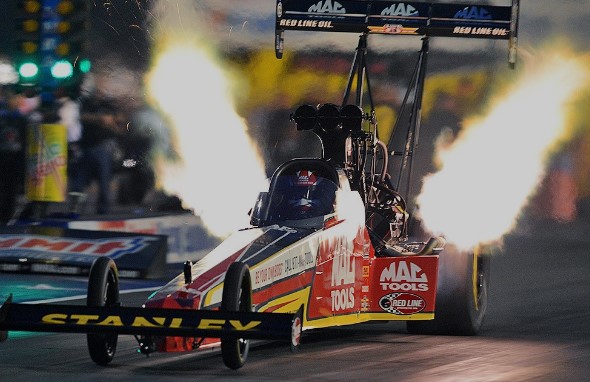The Thrill of Drag Racing: Unleashing Horsepower on the Quarter-Mile
Drag racing, an adrenaline-fueled motorsport, is a captivating spectacle that blends speed, precision, and sheer power. With origins deeply rooted in the American automotive culture, drag racing has evolved from its humble beginnings on abandoned airstrips to become a globally celebrated motorsport. This article explores the fascinating world of drag racing, delving into its history, the science behind the speed, the iconic drag strips, and the culture that surrounds this high-octane sport.
History of Drag Racing:
The roots of drag racing can be traced back to the 1930s and 1940s, when enthusiasts would gather on deserted airstrips to test the speed and performance of their cars. These informal races pitted one car against another in a straight-line dash, with the winner determined by who reached the end of the strip first. As the popularity of these impromptu races grew, organized events began to take shape.
One of the pivotal moments in the history of drag racing occurred in 1951 when the National Hot Rod Association (NHRA) was founded by Wally Parks. The NHRA provided a structured framework for drag racing competitions, establishing rules and safety regulations that would shape the future of the sport. This marked the transition of drag racing from underground contests to a legitimate and organized motorsport.
The Science of Speed:
At the heart of drag racing is the quest for speed, and achieving blistering acceleration requires a deep understanding of automotive engineering and aerodynamics. Drag racing vehicles, known as dragsters, are purpose-built machines designed for maximum acceleration in a straight line.
One key element in the pursuit of speed is horsepower. Dragsters are often equipped with engines boasting enormous power outputs, fueled by nitromethane, a high-octane racing fuel. The combination of powerful engines, lightweight chassis, and specialized tires allows dragsters to reach mind-boggling speeds in a matter of seconds.
The drag racing process is a precise dance between power and traction. As dragsters launch off the starting line, the tires must grip the track to convert engine power into forward motion. The balance between power and traction is a delicate one, and teams spend countless hours fine-tuning their setups to optimize performance.
The iconic quarter-mile distance of a drag race is a standardized measure that adds an element of universality to the sport. This distance demands a delicate balance of power, control, and aerodynamics, making it the perfect canvas for automotive engineers and drivers to showcase their skills.
Iconic Drag Strips:
Drag racing has produced legendary venues that have become synonymous with speed and adrenaline. One such iconic drag strip is the NHRA’s Pomona Raceway in Southern California. Pomona has played host to numerous historic moments in drag racing, with its long history dating back to the early days of the sport. The Winternationals and the NHRA Finals, held at Pomona, are among the most prestigious events in drag racing.
Another legendary drag strip is the Indianapolis Raceway Park, home to the NHRA U.S. Nationals. This event, often referred to as the “Big Go,” is the oldest and most prestigious drag race in the world. The winners of the U.S. Nationals are celebrated as the crème de la crème of drag racing, etching their names into the annals of motorsport history.
Beyond the United States, the Santa Pod Raceway in the United Kingdom stands out as a prominent drag racing venue. Known for its European Drag Racing Championship events, Santa Pod attracts competitors and fans from across the continent. The international appeal of drag racing continues to grow, with events and tracks spanning the globe.
The Culture of Drag Racing:
Drag racing isn’t just about crossing the finish line first; it’s a culture that embraces speed, innovation, and camaraderie. The drag racing community is a tight-knit group of enthusiasts, from amateur racers with a passion for speed to professional teams with state-of-the-art equipment.
Car enthusiasts and gearheads gather at drag strips to witness the raw power of the machines and the skill of the drivers. The smell of burning rubber, the deafening roar of engines, and the sight of flames shooting from exhaust pipes create an electrifying atmosphere that captivates spectators.
Beyond the noise and speed, drag racing has birthed its own subculture, complete with its own set of rituals and traditions. The staging process, where cars approach the starting line and position themselves for the race, is a ritualistic dance. The staging lights, known as the “Christmas Tree,” with its colored bulbs, signal the countdown to the adrenaline-pumping launch.
The personalities within the drag racing community contribute to the sport’s allure. Drivers become celebrities, and rivalries between teams add drama to the competitions. The drag racing culture celebrates innovation and pushes the boundaries of what’s possible in the quest for speed.
Conclusion:
Drag racing, with its roots in the streets and airstrips of mid-20th century America, has transformed into a global motorsport phenomenon. The pursuit of speed, the engineering marvels of dragster technology, the iconic drag strips, and the vibrant culture surrounding the sport make drag racing a thrilling and enduring spectacle.
As drag racing continues to evolve, embracing new technologies and pushing the limits of what’s possible, it remains a celebration of automotive passion and the unrelenting quest for speed. Whether you’re a seasoned fan or a newcomer to the world of drag racing, the quarter-mile strip beckons as a canvas where horsepower, innovation, and sheer determination come together in a symphony of speed.
